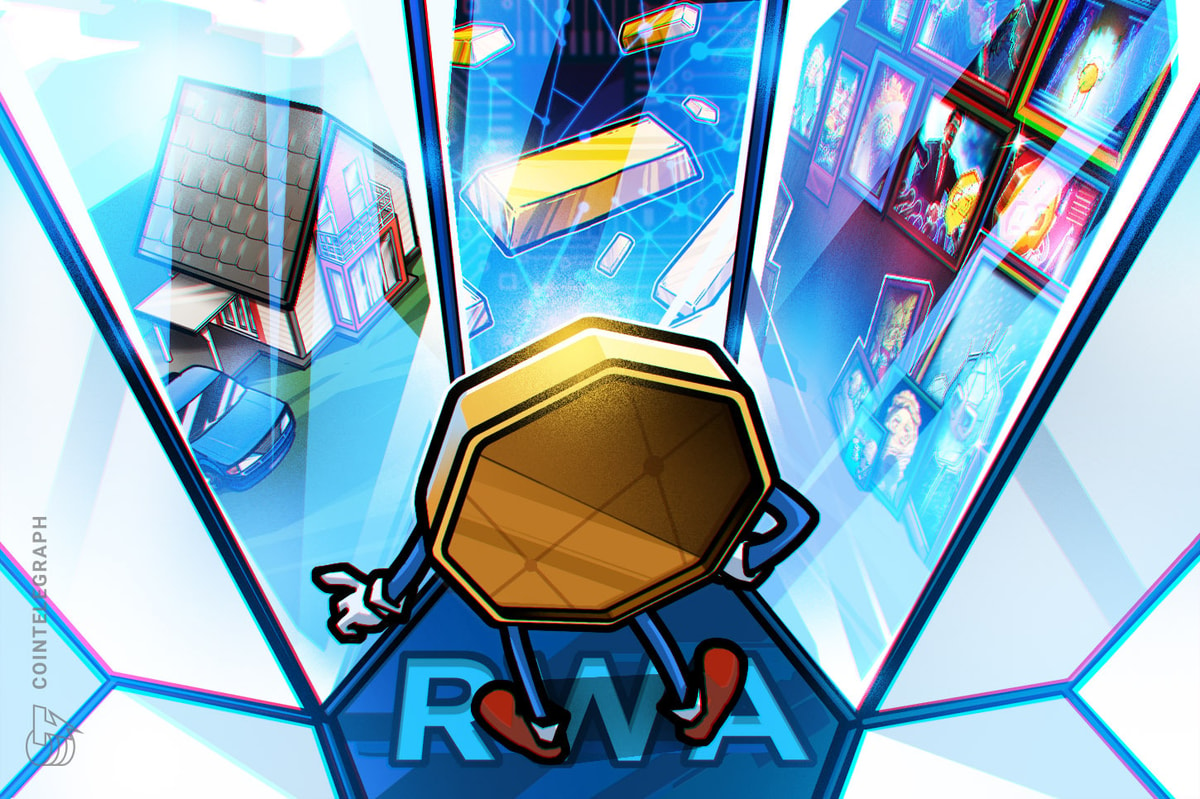Cointelegraph Accelerator participant Zaros, a decentralized exchange (DEX) specializing in perpetual futures, was the focal point of the latest Cointelegraph X Spaces session. Co-founders Guilherme Bettanin and Pedro Bergamini shared insights on Zaros’ unique features for traders and liquidity providers, strategic partnerships and plans for decentralized governance.
After a fantastic AMA with @zarosfi leaders @gui_bettanin @0xpedro_eth, we wanted to reshare it in case you missed it!
— Cointelegraph (@Cointelegraph) June 14, 2024
Liquid restaking is a hot topic in #crypto, so let us know what you think about their approach below.
[Cointelegraph Acceleration] https://t.co/tAvyQ4IBe0
Zaros is an Ethereum Virtual Machine (EVM)-compatible perpetual DEX that facilitates leveraged trading across various markets, including crypto, forex and commodities. The Arbitrum-based platform integrates liquid staking with perpetual futures, allowing holders of liquid staking tokens (LSTs) and liquid restaking tokens (LRTs) to lend their liquidity to support perpetual markets.
“Our whole vision from the beginning is to make it feel like you’re trading on a centralized exchange (CEX),“ Bettanin remarked, addressing the common complexities and usability issues associated with DEX platforms.
To achieve this goal, Zaros implemented several user-friendly features. These include an intuitive UI/UX, support for long-tail assets and login options via Apple ID or email. Additionally, a sub-account system is present for isolated margin trading.
Zaros’ trading account system features cross-margining by default, enabling users to manage risk profiles and use various types of collateral, such as Lido Staked ETH (StETH) and wstETH. This design supports complex trading strategies, allowing users to earn interest on staked assets while hedging their positions — features often unavailable on other DEXs and some CEXs.
A dual-engine approach to enhance trading and liquidity
“Zaros is actually made up of two products,“ Bergamini explained:
“The first is a perpetual trading engine that is already live on a testnet. The second, which is still under development, is a market-making engine designed to incentivize liquidity providers with trading fees.”
For traders, Zaros’ two-pronged approach unlocks several key features. Users can bridge assets from Ethereum to Arbitrum, the blockchain on which Zaros operates. The platform supports leverage through a pre-determined loan-to-value ratio based on collateral type. Median price data feeds are aggregated from major CEXs, ensuring users receive competitive quotes.
Community engagement and rewards
To foster early community engagement, Zaros launched a special program during the testnet phase to reward traders. “We want to build a relationship with the community early on,“ Bettanin said.
The program uses a tiered zPoints system based on trading activity, enabling users to earn points through actions such as trading volume and profit targets. These points can be converted into a multiplier within a league system, with higher tiers offering increased rewards.
“There are several ways to participate in the points campaign without investing anything,” said Bettanin. One notable method is allowing users to mint fake Ether (ETH) and USD Coin (USDC) to test trading strategies and indicators without any financial risk.
The program also rewards tokenholders and liquidity providers (LPs). Owning ZRS tokens earns users points while providing liquidity on Balancer unlocks the highest point potential.
Projected earnings for liquidity providers
“We ran an agent-based simulation to calculate our projected annual percentage rates,” Bettanin shared. The simulation took into account data from leading perpetual futures protocols, including pool sizes and trading volumes.
According to Bettanin, LPs can earn a base rate of 70% of all trading fees without taking directional risk against traders. The remaining 30% goes to the Zaros DAO for buybacks, burns and development initiatives:
- 15% to veZRS lockers: This portion of the revenue generated is allocated to veZRS lockers, incentivizing long-term holding and participation in the ecosystem.
- 10% to the DAO Treasury: Reserved for the DAO Treasury, this portion empowers the decentralized autonomous organization (DAO) with funds to support its decision-making processes.
- 5% for buyback and burn of ZRS: The remaining revenue is used to buy back ZRS tokens from the market and subsequently burn them, reducing the overall supply.
The speakers also highlighted that Zaros LPs can be rewarded with Boosted Restaking Vaults. These vaults offer boosted returns — ranging from double to quadruple or more over standard staking options — by combining trading fees from the perpetuals DEX, zPoints and incentives from Zaros’ partner integrations, like EtherFi’s loyalty points and EigenLayer’s points.
Advanced risk management features
“We have risk management features that allow LPs to remain delta-neutral,” Bergamini emphasized, adding:
“To do this, we have a velocity-based funding rate system that adjusts every second based on market skew — the difference between long and short positions. In addition, we mark all prices based on this skew and the configured scale per market.”
“In a real mainnet scenario,“ the co-founder continued, “older DEXs and CEXs with real money would arbitrage and correct the price. The testnet environment, with its free fake funds, may encourage riskier behavior than a live market with real capital at stake.”
Stablecoin integration
Zaros’ stablecoin USDz functions primarily as a settlement asset within the project ecosystem, streamlining payouts for traders and LPs. Zaros’ modular infrastructure accepts multiple collateral types, including yielding assets like LSTs and standard ERC-20 tokens, catering to both traditional finance and decentralized finance (DeFi) users.
Currently in public testing on Arbitrum Sepolia, Zaros plans to deploy on Monad’s mainnet later this year. Bettanin explained the decision, stating:
“Monad is about parallelism. And parallelism, with the right mechanism design, is key to scaling DeFi applications to centralized finance.”
He highlighted the potential for a hybrid order book and automated market maker (AMM) powered by Boosted Restaking Vaults to optimize execution and reduce costs for traders while increasing fees for LPs.
“Our v2 will be natively modular,” Bettanin continued and concluded: “We are going to be the first perpetual DEX to take advantage of the scalability in computing that parallelism brings and with more creativity on a synchronized settlement against LPs and liquidations.”
“This would result in lower costs for traders and higher fees for LPs, making both sides happier.”
Disclaimer. Cointelegraph does not endorse any content or product on this page. While we aim at providing you with all important information that we could obtain in this sponsored article, readers should do their own research before taking any actions related to the company and carry full responsibility for their decisions, nor can this article be considered as investment advice.












